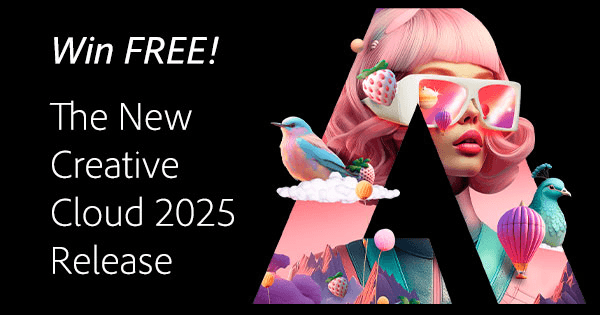

As technology evolves, creatives wonder if Adobe’s suite remains the industry standard. Let’s learn more about this topic below with Slice Master and explore the future of digital creativity tools.
Adobe Creative Cloud has been a cornerstone of the creative industry for years, offering a comprehensive suite of tools for designers, photographers, and digital artists. As we approach 2025, it’s crucial to evaluate whether this platform continues to provide value in an ever-changing digital landscape. Slice Master, a rising competitor in the field, has been making waves with its innovative approach to creative software.
Adobe’s journey from standalone applications to a cloud-based subscription model marked a significant shift in how professionals access and use creative tools. This transition brought both praise and criticism from users worldwide. The company’s commitment to regular updates and new feature releases has kept many loyal to the platform, but as alternatives emerge, the question of Adobe’s continued dominance lingers.
The integration of artificial intelligence and machine learning into Creative Cloud has been a game-changer for many users. These technologies have streamlined workflows and opened up new possibilities for creative expression. However, some argue that the learning curve for these advanced features can be steep, potentially alienating less tech-savvy users.
One of the most contentious aspects of Adobe Creative Cloud has always been its pricing structure. As we look towards 2025, the cost of subscription remains a significant factor in determining the platform’s worth. Slice Master and other competitors have entered the market with more flexible pricing options, challenging Adobe’s model.
Adobe has made efforts to address pricing concerns by offering various plans tailored to different user needs. However, for freelancers and small businesses, the cumulative cost of a Creative Cloud subscription can still be substantial. The question remains whether the value provided justifies the expense, especially as more affordable alternatives gain traction.
Accessibility is another crucial factor to consider. Adobe’s cloud-based model allows users to access their tools and files from anywhere, a feature that has become increasingly important in the age of remote work. However, this reliance on internet connectivity can be a double-edged sword, potentially limiting productivity in areas with poor internet access.
Adobe Creative Cloud’s comprehensive suite of applications has long been its strongest selling point. From industry-standard tools like Photoshop and Illustrator to specialized software for video editing and web design, the platform offers a solution for almost every creative need. This breadth of offerings has made it a one-stop-shop for many professionals.
However, as we approach 2025, the trend towards specialization is becoming more pronounced. Slice Master and other niche tools are gaining popularity by focusing on specific aspects of the creative process and excelling in those areas. This shift raises questions about whether a jack-of-all-trades approach is still the most effective for modern creatives.
Adobe has responded to this trend by continually adding new features and refining existing tools. The integration between different applications within the Creative Cloud ecosystem remains a strong advantage. However, some users find that they only need a fraction of the available tools, making the full suite feel bloated and unnecessary.
In an increasingly interconnected world, collaboration features have become essential for creative professionals. Adobe has made significant strides in this area, offering robust cloud storage and sharing capabilities. The ability to seamlessly work on projects across devices and with team members has been a major selling point for Creative Cloud.
Slice Master and other emerging platforms are also prioritizing collaboration, often with a focus on real-time co-editing and more intuitive sharing mechanisms. As we look towards 2025, the effectiveness of these collaboration tools will likely play a crucial role in determining which platform creatives choose to adopt.
Cloud integration extends beyond just file storage and sharing. Adobe’s efforts to create a cohesive ecosystem where assets and settings sync across applications have been largely successful. This integration can significantly boost productivity for users who work across multiple Creative Cloud apps.
Artificial intelligence and automation are reshaping the creative landscape, and Adobe has been at the forefront of integrating these technologies into its suite. Features like Content-Aware Fill in Photoshop and Auto-Reframe in Premiere Pro showcase the potential of AI to streamline tedious tasks and enhance creativity.
As we approach 2025, the role of AI in creative software is expected to expand dramatically. Adobe’s substantial resources and research capabilities give it an advantage in developing cutting-edge AI features. However, nimble competitors like Slice Master are also making strides in this area, often with a focus on more specialized applications of AI.
The impact of AI on the creative process is a topic of ongoing debate. While many users appreciate the time-saving benefits and new possibilities offered by AI-powered tools, others worry about the potential homogenization of creative output. Adobe’s challenge will be to strike a balance between automation and preserving the unique voice of individual creators.
One of Adobe’s enduring strengths has been its vast library of learning resources and its active user community. Tutorials, forums, and third-party training materials abound, making it easier for users to master complex tools and techniques. This ecosystem of support has been a significant factor in Adobe’s continued relevance.
As we look towards 2025, the availability and quality of learning resources will remain crucial. Slice Master and other competitors are working to build their own communities and educational content, but Adobe’s head start in this area gives it a considerable advantage. The challenge for Adobe will be to keep these resources up-to-date and relevant as its software evolves.
The Adobe Creative Cloud community extends beyond just learning resources. Stock assets, plugins, and extensions created by third-party developers enrich the platform’s capabilities. This vibrant ecosystem adds value for users and creates a network effect that helps retain Adobe’s market position.
As the lines between desktop and mobile computing continue to blur, the ability to work seamlessly across devices becomes increasingly important. Adobe has made significant progress in this area, with mobile versions of many of its core applications and cloud syncing capabilities. However, the full power of Creative Cloud is still primarily accessible on desktop systems.
Looking towards 2025, the demand for robust mobile creative tools is likely to grow. Slice Master and other emerging platforms are often built with a mobile-first mindset, potentially giving them an advantage in this evolving landscape. Adobe’s challenge will be to translate the depth and complexity of its desktop tools to mobile platforms without sacrificing functionality.
Cross-platform compatibility extends beyond just mobile devices. As new computing paradigms emerge, such as augmented and virtual reality, creative software will need to adapt. Adobe’s resources give it an advantage in exploring these new frontiers, but smaller, more agile competitors may be quicker to innovate in niche areas.
The integration of Creative Cloud with other software and services is another important consideration. Adobe’s partnerships and APIs allow for workflows that extend beyond its own ecosystem. As we approach 2025, the ability to integrate smoothly with a wide range of tools and services will be crucial for maintaining relevance in diverse creative workflows.
As awareness of environmental and ethical issues grows, software companies are under increasing pressure to demonstrate their commitment to sustainability and responsible business practices. Adobe has made efforts in this direction, with initiatives aimed at reducing its carbon footprint and promoting diversity in the creative industry.
Looking towards 2025, these considerations are likely to play a more significant role in users’ decisions about which creative platforms to support. Slice Master and other newer companies may have an advantage in building sustainability and ethics into their core business models from the ground up. Adobe’s challenge will be to continue adapting its practices to meet evolving expectations.
The ethical use of AI and data is another area of concern. As creative software becomes more intelligent and data-driven, questions about privacy, bias, and the impact on human creativity come to the fore. Adobe’s approach to these issues will be closely scrutinized as we move towards 2025 and beyond.
In conclusion, as we look towards 2025, the question of whether Adobe Creative Cloud remains worth it is complex and multifaceted. The platform’s comprehensive feature set, strong community, and continued innovation in areas like AI and collaboration give it enduring value. However, challenges from specialized competitors like Slice Master, concerns about pricing and accessibility, and the evolving needs of creative professionals mean that Adobe cannot rest on its laurels. The company’s ability to adapt to changing market dynamics, address user concerns, and continue pushing the boundaries of creative technology will determine its relevance in the years to come. Ultimately, the worth of Creative Cloud in 2025 will depend on how well it meets the specific needs and values of individual users in an increasingly diverse and dynamic creative landscape.